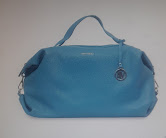COVID-19 has been harder on women business owners. These 11 resources can help!
From offering grants to gathering resources, many organizations have mobilized to support female entrepreneurs during the global pandemic.
For years female entrepreneurs have fought for their seat at the table, collectively marching from secretary desks to C-suites. In 2019, American Express reported that majority women-owned businesses made up 42% of all businesses, employing 9.4 million workers—up from just 4% of businesses and 230,000 workers in the 1970s.
And for years small businesses have been the engine fueling female entrepreneurs’ rise, as 99.9% of women-owned businesses employ fewer than 500 staffers.
Now the coronavirus pandemic threatens to undo much of that progress in a matter of months.
With COVID-19 wreaking havoc on the economy, a recent poll from the U.S. Chamber of Commerce showed that 24% of small businesses are less than two months away from shuttering permanently, and 11% are less than one month away. And according to American Express, many women-owned businesses work within industries most vulnerable to COVID-19 devastation. Roughly 22% of all women-owned businesses are hair salons, nail salons, and pet groomers, and women also own 16% of the hospitality and food service sector.
These women are in need of emergency funding. But the federal Paycheck Protection Program, which offers $349 billion in loans to small businesses, was running on empty as of yesterday—and if the program sputters, female entrepreneurs, who have historically faced difficulties securing capital, will be left with even fewer options.
“Women tend to have less of a track record with banks,” Laurie Fabiano, president of the Tory Burch Foundation, explains, “because women tend to borrow less than men. Most of them don’t have a banker on speed dial.”
The Tory Burch Foundation is one of many organizations that have mobilized to support female entrepreneurs during the pandemic, in ways ranging from resource gathering to professional mentorship to COVID-19-specific funding.
If you need help, start here:
TORY BURCH FOUNDATION
The foundation’s website has transformed into a resource hub for women-led small businesses during the COVID-19 crisis, spanning guides on applying for loans to managing cash flow to handling childcare during the pandemic.
“Navigating the information online is a labyrinth of a job” that many business owners don’t have bandwidth for, Fabiano says, so her staff spent weeks scouring the internet for the top resources, pulling together hundreds of links and also creating content. “We can help people know what to do,” she says.
The foundation is also hosting a webinar on stimulus funding.
BUMBLE COMMUNITY GRANT
The female-friendly app is offering 150 grants of up to $5,000 to small businesses impacted by COVID-19. To apply, log on to the app and use any mode to match with the Bumble Community Grants profile.
COVID-19 BUSINESS FOR ALL EMERGENCY GRANT
Hello Alice, a machine learning company founded as a women’s virtual accelerator, is offering immediate $10,000 grants to small businesses, supplied by Silicon Valley Bank, the eBay Foundation, and other partners.
IFW COVID-19 RELIEF FUND
IFundWomen, a crowdfunding platform, is giving micro-grants to women-run businesses, issued on a rolling basis. “Start a campaign” to be considered.
FACEBOOK SMALL BUSINESS GRANTS PROGRAM
Of the $100 million fund, $40 million in grants is set for 10,000 U.S.-based small businesses. And of those, Facebook said it’s “prioritizing 50% of grants to eligible minority, women and veteran-owned businesses.”
Applications open by location, with an upcoming round in New York and Seattle on April 18. Check the website to see when your location opens.
RED BACKPACK FUND
Backed by billionaire Spanx founder Sara Blakely, whose “lucky” college book bag inspired its name, the $5 million fund is donating $5,000 grants to 1,000 female entrepreneurs. The fund is accepting applications in cycles starting on May 4, June 1, July 6, and August 3. Sign up to be notified of these dates.
VERIZON SMALL BUSINESS RECOVERY FUND
Verizon joined with the Local Initiatives Support Corporation to offer as much as $5 million in grants of up to $10,000 each to small businesses, “especially entrepreneurs of color, women-owned businesses and other enterprises that don’t have access to flexible, affordable capital.”
Its next round of applications starts mid-April. Register to stay updated.
SHEAMOISTURE COMMUNITY COMMERCE FUND
The beauty brand announced a $1 million campaign to support minority business owners. While the fund’s grant applications appear closed, women of color entrepreneurs can still enroll in an e-learning lab to “gain education, access to resources, mentorship, and advice on how to prepare for the economic downturn” from Sundial Brands, Unilever, and Dartmouth’s Tuck School of Business.
ASSISTHER EMERGENCY RELIEF GRANT
Texas Woman’s University is offering $10,000 grants to women-run businesses in Texas. The funds are intended for “technology upgrades or other items needed to change or adapt your business model,” but should not be used for “payment of sales tax and payroll, advertising, purchase of food for consumption, penalties and fees, and charitable donations.”
ANONYMOUS WAS A WOMAN EMERGENCY RELIEF GRANT
Anonymous Was A Woman and the New York Foundation for the Arts are offering $250,000 in grants of up to $2,500 apiece, to women-identifying visual artists over the age of 40.
VISA FOUNDATION
The Visa Foundation pledged $200 million over five years, to be distributed in $60 million grants to NGOs that support small and micro businesses worldwide, with a focus on women’s empowerment.
“When women thrive, communities thrive. We know this matters now more than ever as the global economy seeks to recover and rebuild,” Visa said. It has not yet publicized which NGOs will participate.








